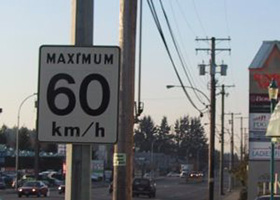

Similarly, high speed trading admits of little capacity for mistakes, but errors abound – most prominently with the flash crash on May 6. When stock prices started to plummet over the space of a minute – and continued to collapse for another 10 minutes, the high frequency traders withdrew from the marketplace. Their algorithms weren’t equipped for that kind of volatility. In the meantime, retail traders – the ones with stop loss orders to sell at the market price were, effectively, “pwned.”
More remarkably, as a recent New York Times article indicates, the smart money in high speed trading is not necessarily where you think it is. As one observer put it: “New Jersey is the new heart of Wall Street.” The article focuses on Direct Edge, an all electronic stock exchange whose servers are located in Secaucus, New New Jersey. Portentously, the article notes: “But some experts wonder whether the technology is getting dangerously out of control. Even apart from the huge amounts of energy the megacomputers consume, and the dangers of putting so much of the economy’s plumbing in one place, they wonder whether the new world is a fairer one — and whether traders with access to the fastest machines win at the expense of ordinary investors.”
Some long-time traders, naturally, disagree. Jeffrey Carter, a long-time trader frequently featured on TV business news shows and who writs at the Points and Figures blogsite, takes issue with the notion that technology is too fast. Rather, regulation isn’t fast enough.
“It’s also important to try and figure out the evolution of the marketplace, given the current regulatory structure. Regulations affect the market and how it functions tremendously. For example, the repeal of Glass-Steagall changed the marketplace and how entities function in it more than many technological advances. Allowing payment for order flow changes trading strategy and concepts of risk. Allowing internalization changes trading strategy, and elements of riskiness. Firms respond to the incentives offered up by regulation.
“The nature of ethics in an electronic environment becomes critical. There is no such thing as a gentleman’s agreement, peer pressure or the old standard of pit etiquette. Electronic trading is anonymous. It’s also a zero sum game. If my algo is faster than yours, I make all the money. If I can develop a quote stuffing algo to screw your system up, I win. If I can develop a worm to destroy your systems, I win. In loose terms, think of the ethics of electronic trading versus human trading to the way the internet has changed human discourse on computers. Comments on blogs and articles are much coarser and abrupt than if those same humans were having a discussion in a coffee shop. The same with electronic trading. The way the rules of trading are currently written by regulators, and by exchanges, are not up to snuff to stop nefarious practices from many electronic trading outfits. This has caused damage to the marketplace.”
Among the practices he would like to ban are internalization (where customer orders are matched by the broker-dealer before they get to an exchange) and paying for customer order flow (which can then be internalized).
“If structured correctly, electronic trading and hyper competition are good for the market. Things happen faster. Volume increases and participants are able to enter and exit efficiently. The speed is why structure becomes crucial to good clean markets. The way the market is structured today is incompatible with the speed that the market trades. This is why the potential for another adverse event, like the flash crash, is always clear and present. The current structure and rules are also why a firm like Goldman can bat 1.000 when supposedly undertaking the ‘risky’ job of trading.”
In the end, traders take advantage of the regulatory structure of the market. Technology may make it easier. If it’s unfair, it’s up to the regulators to step in.
